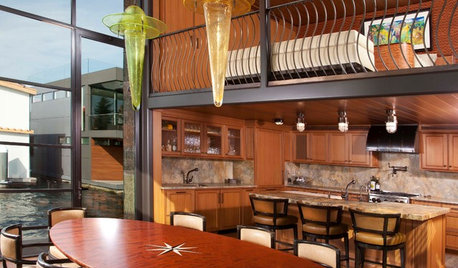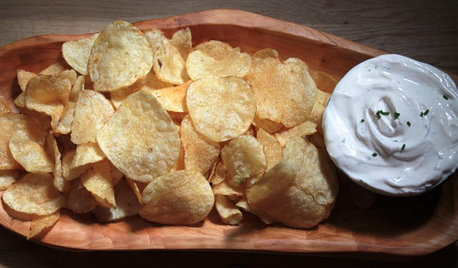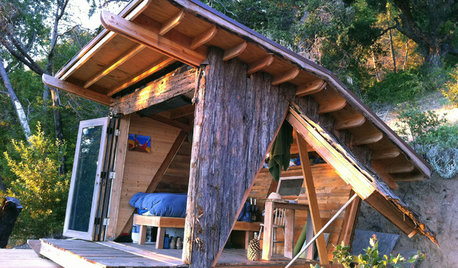Bark/Wood Chips?
TheMasterGardener1
12 years ago
Related Stories

CONTEMPORARY HOMESHouzz Tour: A Bark-Covered Floating Getaway on Lake Union
If the unusual siding doesn’t clue you in to the fine craftsmanship in this floating home, the handmade handrails, lights and furniture will
Full Story
SHOP HOUZZShop Houzz: It’s Chip and Dip Time!
There’s a chip and dip set that’s perfect for any occasion, from formal to casual
Full Story
DECORATING GUIDESLoving Color: 5 Ways to Decorate With Paint Chips
Turn those also-ran paint strips into conversation-starting art and accessories for your home
Full Story
GARDENING GUIDESThe Art of Green Mulch
You can design a natural garden that doesn’t rely on covering your soil with wood and bark mulch
Full Story
DREAM SPACESGreat Escape: A Tiny, Off-the-Grid Hideout in the California Woods
Covered in bark and topped by a living roof, this 90-square-foot retreat hides on its California hillside
Full Story
MATERIALSRaw Appeal: 9 Wonderful Ways With Natural Wood
Go with the grain and use minimally finished wood for gorgeous accent walls, artwork and more
Full Story
COLORPick-a-Paint Help: How to Quit Procrastinating on Color Choice
If you're up to your ears in paint chips but no further to pinning down a hue, our new 3-part series is for you
Full Story
GARDENING GUIDESHow to Pick a Mulch — and Why Your Soil Wants It
There's more to topdressing than shredded wood. Learn about mulch types, costs and design considerations here
Full Story
MATERIALSDesign Workshop: Natural Wood Siding Minus the Maintenance
No need to worry about upkeep when you choose wood that embraces weathering
Full Story
REMODELING GUIDESYour Floors: Zebra, Tiger, and Teak Wood, Oh, My!
Get the Pros and Cons of Exotic Woods: Hickory, Cherry, Rosewood and More
Full StorySponsored
Columbus Area's Luxury Design Build Firm | 17x Best of Houzz Winner!
More Discussions








jodik_gw
TheMasterGardener1Original Author
greenman28 NorCal 7b/8a
TheMasterGardener1Original Author
greenman28 NorCal 7b/8a